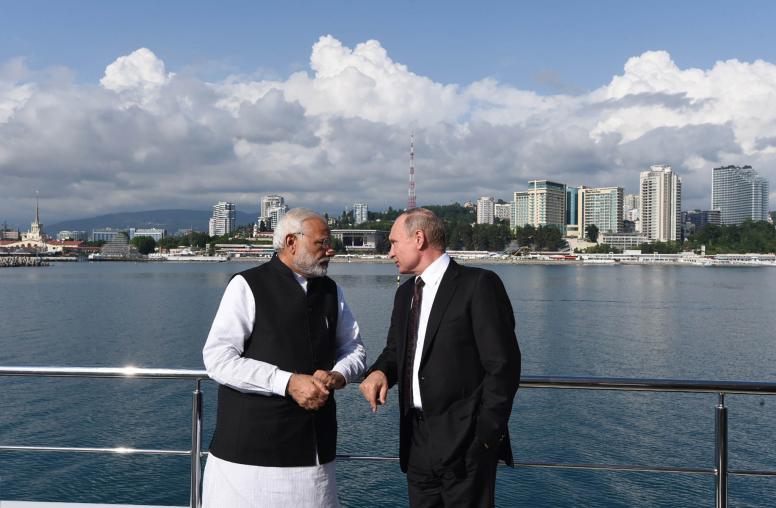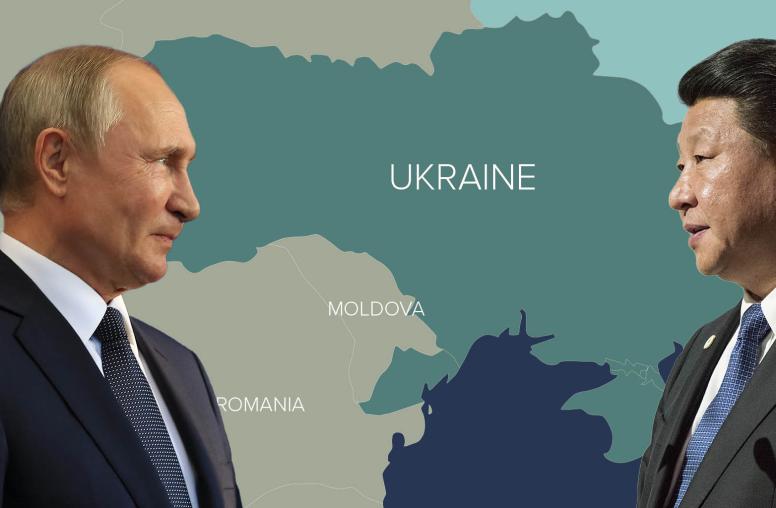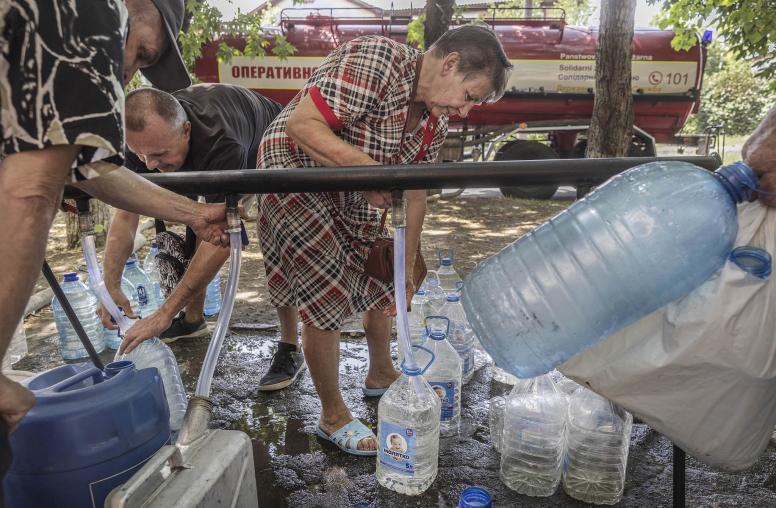From Conflict in the Streets to Peace in the Society
How Can We Ally Traditional Peacebuilding with Non-Violent 'People Power'?
From Hong Kong’s boulevards and Nairobi’s Uhuru Park to the maidans of Kyiv, Cairo and Tunis, millions of people have massed in recent years to demand greater democracy and transparency from their governments. Dozens of similar campaigns have been fought more quietly. A quarter-century of worldwide growth in such non-violent civil resistance movements has sharpened a question both for their activists and for practitioners of traditional peacebuilding: How can such resistance movements and conflict-resolution work be combined to build more stable, democratic societies?
Even when they are non-violent, mass movements often are confrontational, using strikes, boycotts or civil disobedience to sharpen conflict with authoritarian or corrupt systems of governance. On July 16, USIP gathered social justice and peacebuilding practitioners to discuss how that sharpening of conflict can be meshed with the peacebuilders’ role in resolving disputes.
Among countries that experienced major movements for social change, “the probability of experiencing a civil war within 10 years of the end of the conflict was 43 percent for violent campaigns and 28 percent for nonviolent ones,” according to USIP’s Maria Stephan.
The July 16 forum was webcast as the first live event in a course offered by USIP’s Global Campus, an online training program. The course, Civil Resistance and the Dynamics of Nonviolent Movements, explores the rise of such movements and how their advances toward just and peaceful societies can be sustained. Some of the Global Campus students (who number about 30,000 worldwide and include civil society activists, policymakers and scholars) participated in the forum and online discussion from places as disparate as Pakistan, Serbia and Swarthmore, Pennsylvania.
“The approaches taken in traditional peacebuilding and nonviolent civil resistance differ, but they’re all part of an over-arching, conflict-transformation approach and strategy,” said Maria Stephan, a senior policy fellow at USIP who has researched resistance movements and their role in democratic development. While traditional peacebuilding de-escalates conflicts with techniques like dialogue and mediation, “nonviolent civil resistance actually intensifies conflict” in the effort to shift power in favor of social justice, she said. “So civil resistance in a way ripens many conflicts for meaningful negotiation and conflict resolution.”
While “peacebuilding and nonviolent civil resistance intersect … I would say probably for too long these communities have operated in slightly separate orbits, to the detriment of both,” said Stephan.
“We think they are absolutely symbiotic: You have to have civil resistance work, peacemaking and peacebuilding together,” said Kerri Kennedy, an associate general secretary of the American Friends Service Committee, a Quaker organization that supports social justice programs worldwide.
Data Point: Non-Violent Resistance Defeats Armed Struggle
Stephan noted her research, with the University of Denver’s Erica Chenoweth, which found that, since 1900, nonviolent resistance was twice as effective as armed struggle at forcing changes in government.
“We looked at 323 campaigns from 1900 to 2006, and these were campaigns that had at least 1,000 people involved, against dictatorships [or] foreign occupation, and campaigns for territorial self-determination,” Stephan said. “The non-violent resistance succeeded about 54 percent of the time, compared to 26 percent for violent campaigns.”
An online participant, Swarthmore College Sociology Professor Lee Smithey, asked whether the choice between armed or non-violent struggle affects the way societies evolve afterward.
“We found a very strong, positive correlation between nonviolent resistance movements and democratic consolidation after the transition happened,” Stephan said. “The probability that a country will be a democracy five years after a campaign ends is 57 percent amongst nonviolent movements but less than 6 percent among successful violent campaigns.” And, she added, “The probability of experiencing a civil war within 10 years of the end of the conflict was 43 percent for violent campaigns and 28 percent for nonviolent ones.”
The Deceptiveness of Sudden Change
Despite appearances in the overthrow of four authoritarian governments during the 2011 Arab Spring revolts, the changes wrought by non-violent resistance take long, laborious preparation, panelists noted.
“Many Syrians, obviously, were inspired very much” by the sudden, peaceful ouster of Egypt’s President Hosni Mubarak and Tunisia’s President Zine el-Abidine Ben Ali, said Stephan. “But one of the lessons they perhaps wrongly took from the Egyptian struggle and the Tunisian struggle was that this is a 25-day struggle.”
The change in Egypt had been building for more than a decade, through the Kifaya movement, the Muslim Brotherhood and other groups, noted Manal Omar, USIP’s acting vice president for the Middle East and Africa Center. Tunisia’s pro-democracy movements — including labor unions, human rights networks and religious groups — had been building since at least the 1980s. And Kennedy noted the decades of work that prepared the peaceful overthrow of South Africa’s apartheid regime. Still, according to Stephan and Chenoweth, the average nonviolent campaign takes three and a half years to run its course — compared to nine years for armed campaigns. This finding challenges popular notions that violence is more likely to lead to quicker victories than nonviolent resistance campaigns.
The complexity of non-violent social and political change means that it does not always succeed, Omar noted. “The skill set to mobilize people to get to the street is a different skill set from the people who are actually manag[ing] the street, is a different skill set for those who will transition, is a different skill set for who will govern,” she said.
Civil Resistance vs. Violent Extremism
USIP President Nancy Lindborg, who moderated the discussion, asked how nonviolent resistance movements can best work against the sense of rootlessness, especially among young people, that can open the path to their political or religious radicalization.
In communities of people who feel marginalized from the wider societies around them, young people need a way to feel that they can take corrective action, said Omar. Notably among alienated youth who are being recruited increasingly by the “Islamic State,” or ISIS, “we, as an international community who believe in nonviolence … have not provided tangible action that they can take” against injustices that they may feel in their societies, both in the Middle East and in the West, she said. “I think that’s where we’re failing and the violent extremist groups are succeeding, is that they’re providing them quick action, they’re providing them an answer.”
A critical step is to find ways to support local groups working to oppose corruption in their societies, which is a powerful driver of popular frustrations and broad radicalization, said Stephan. “There’s a whole body of literature out there that links corruption and protracted violence.” In Curtailing Corruption: People Power for Accountability and Justice, a 2014 book supported with a USIP grant, Washington-based scholar Shaazka Beyerle analyzed a dozen citizens’ anti-corruption movements worldwide. Stephan called for strategies that support such grass-roots, civic, anti-corruption efforts, alongside “top-down institutional approaches” such as government anti-corruption commissions.
James Rupert is a senior writer and editor at the U.S. Institute of Peace.



